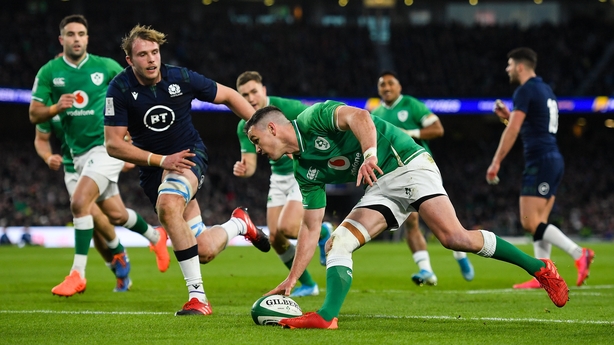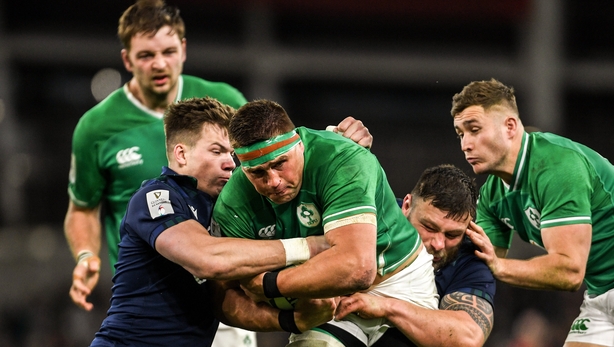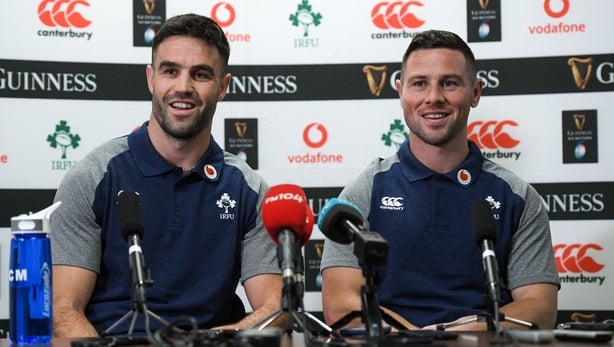It only takes one international game for the narrative to change and after the Six Nations opening round it appears that Eddie Jones is under fire because of his team selection and comments in the media leading up to the game.
In reality, France turned up as a different animal in Paris and were very hard to break down.
A bit closer to home, it's refreshing that Ireland aren’t under heavy scrutiny and Joe Schmidt’s name isn’t the one being bandied about. It’s a new era under Andy Farrell and there’s a sense of hope and excitement with the new regime, especially with a new attack coach in the setup as well.
We don’t have all the answers yet though. Ireland played with a sense of renewed freedom and a chance to express themselves but still only scored 19 points against Scotland, who were under a lot of pressure going in to the game and unlucky not to get more of a result following some missed opportunities.
They unravelled Ireland’s maul, which would be considered a longstanding big strength of Irish rugby, and they held on to possession for long periods of the opening exchanges, stopping us from seeing what the new game plan would reveal.
When Ireland managed to get their hands on the ball there were some variations that hadn’t been used before, evident in the swivel pass from Cian Healy to Sexton for the only try of the game after 10 minutes.

Ireland and Sexton also put some width on their game that was different to the World Cup effort and used a style of attack that would remind you of the All Blacks a few years back.
From the touchlines they used two forwards to run a line back towards the ruck. This is done to interest the density of opposition defenders near the ruck and to turn their hips in to buy a decision from them so Ireland could pass the ball from our scrum-half, out the back of the forwards to our out-half, with two or three other forwards running hard at the defensive line.
This second pod of forwards would then hopefully be running at the opposition's fifth or sixth defender who will have become disjointed from the inside defenders because the Irish 'dummy’ runners should have caused them to make different decisions to their team-mates further out.
It’s a nice framework to use in attack but it wasn’t overly fluid in the first run out. If the forward runners were a bit more alive to carry the ball it would have caused more confusion in the Scotland defence but I felt Ireland were only using this play to go out the back and hit Sexton.
If they wanted to use their forward runners in the front line, they should have used a different set up of three forward carriers and hit the middle man to carry and have the other two on his sides to clear the ruck.
Ireland will hopefully develop this shape to allow for all decisions to be possible at the tackle line - it could well get them easier front-foot ball.

With modern defences, the opposition have a lot of defenders between the ruck and the first pod of forwards so going behind that to change the point of contact is a positive move. The idea isn’t always to create a line break on this phase, although if the player that eventually takes the ball to the tackle line can go forward and get his hands free I’m sure it would be welcomed.
By hitting the second pod instead of the first it means that Ireland have then split the middle of the pitch, which is a much harder defensive situation. The opposition, Scotland in this case, have to defend both sides of a ruck instead of one more open side and one narrower side.
This means that they have to set a solid foundation defence on both sides of the ruck, which takes up more players in a smaller area, and the knock-on effect is that they either can’t take as much width in their defence or can’t come off the line as fast defensively, allowing Ireland to have a better attacking platform, in theory.
We didn’t quite see fast ball all the time from Ireland but you could see that there was a change in tactics, which is promising going forward. They did revert to type a small bit in the second half but when Cooney came on, Sexton moved the ball to width again using the same setup, unfortunately Henderson was turned over before anything came of it.

I don’t think we’re any wiser in terms of the Murray vs Cooney debate. It might not be something that we will get the answer to in this tournament either. Game time will be split between the two and I don’t think there’ll be a definite decision, Farrell doesn’t need to have one either for the time being.
Both players did well but the ball wasn’t particularly quick for most of the game. Whoever starts this weekend won’t be thinking that they own the jersey, which is a good thing as the competition heats up.
Ireland suffered a few injuries last week, including Caelan Doris, who had an eventful three or four minute debut that included four tackles, a turnover and, unfortunately, a nasty looking concussion. Farrell could be without a few of last week’s starters in the build-up to the Wales game next Saturday.
This build up will be refreshing in not having the Schmidt vs Gatland battle in the media, a fresh start for the continuous rivalry.
Scotland challenged the Irish ruck defence with Ali Price trying to drag players out and find a gap, Wales will do the same with Tomos Williams and Rhys Webb at scrum half. It’s an area that needs a bit of improvement from Ireland.
We were lucky that Stuart Hogg didn’t take his chance in the corner but you won’t stop Josh Adams if he is afforded the same opportunities next weekend. Wales will come to Dublin with a stronger pack, in particular their back row, and a better ability to score tries than Scotland.
Either Farrell or Wales boss Wayne Pivac is going to lose their winning start just two matches into the tournament, however with Ireland being at home and having lost only one game in Dublin in six years we’ll be hoping that they can step it up a few notches to build on an edgy first game in this new Irish era.


